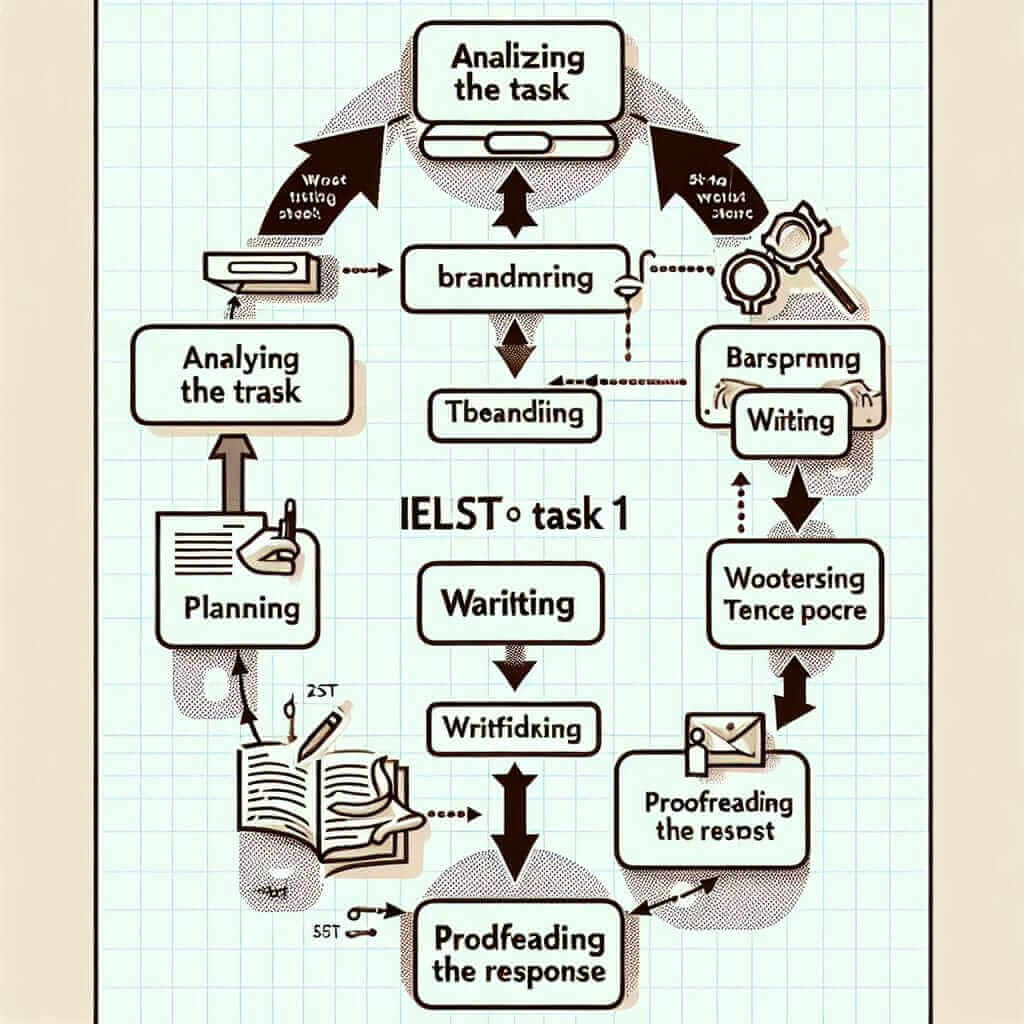As an IELTS instructor with over two decades of experience, I’ve encountered this question countless times: “Should I write a conclusion for IELTS Writing Task 1?” It’s a valid question, especially since the IELTS Writing Task 2 essay requires a conclusion. However, the answer for Task 1 is a bit more nuanced.
Understanding the Purpose of IELTS Writing Task 1
Before we delve into the conclusion debate, it’s crucial to understand the core purpose of Task 1. You are presented with visual data – a graph, chart, table, diagram, or a combination of these. Your task is to accurately and objectively report the key features and trends presented in this visual data, using your own words.
This task assesses your ability to:
- Paraphrase: Can you convey information from the visuals using different vocabulary and sentence structures?
- Identify Trends: Can you spot and describe the main patterns, changes, and significant details in the data?
- Compare and Contrast: Can you effectively highlight similarities and differences within the data?
- Data Interpretation: Can you make sense of the data and present it coherently?
- Time Management: Can you complete this task effectively within the 20-minute timeframe?
The Case Against a Conclusion
Given the above, a conclusion in Task 1 can be seen as redundant. You’ve already analyzed and reported the main features of the data. Adding a concluding paragraph might:
- Exceed the word limit: Task 1 has a minimum word count of 150 words. A conclusion might push you beyond this, eating into valuable time needed for Task 2.
- Introduce new information: A conclusion often summarizes key points and might tempt you to add information not present in the visuals, which is incorrect for Task 1.
- Sound Repetitive: You’ve already reported the trends; restating them in a conclusion wouldn’t add value and might even lower your score for “coherence and cohesion.”
 IELTS Task 1 Process Diagram
IELTS Task 1 Process Diagram
When a Concluding Sentence Might Be Acceptable
While a full-fledged conclusion is unnecessary, a single concluding sentence can be acceptable in very specific scenarios. This is when the task presents a process diagram.
For instance, if the diagram illustrates the process of making chocolate, you might end with:
- “Overall, the diagram clearly shows the complex stages involved in producing chocolate from bean to bar.”
Even in such cases, this sentence should only be used if it feels natural and doesn’t repeat information verbatim.
Focus on What Matters: Clarity, Accuracy, and Concision
Instead of worrying about a conclusion, prioritize these elements in your Task 1 response:
- Clear Overview: Start with a paraphrased sentence that summarizes the type of data and its main purpose.
- Logical Organization: Present the information in a clear, logical manner, grouping similar data points together.
- Precise Language: Use specific vocabulary related to trends (increase, decline, fluctuate, remain stable, etc.) and make accurate comparisons.
- Grammatical Range: Showcase a variety of sentence structures to demonstrate your command of English grammar.
- Proofreading: Always leave a minute or two to review your work for any errors in grammar, spelling, and punctuation.
Example: Applying the Principles
Let’s say the task shows a graph comparing the popularity of different social media platforms among different age groups. An effective response would:
- Paraphrase the task: “The graph provides an overview of social media usage across various age demographics.”
- Highlight key trends: ” Notably, Facebook remains popular amongst older demographics, whereas Instagram and TikTok are favored by younger users.”
- Support with data: “For instance, 70% of users aged 50-65 prefer Facebook, compared to only 20% of users aged 18-25.”
By focusing on accurate reporting and clear presentation, you’ll achieve a much better score than by forcing an unnecessary conclusion.
In Conclusion (See what I did there?)
In the context of IELTS Writing Task 1, your best bet is to focus on delivering a concise, accurate, and well-organized report. Avoid the temptation to write a traditional conclusion. Your time is better spent ensuring your response effectively addresses all the assessment criteria. Happy writing!


